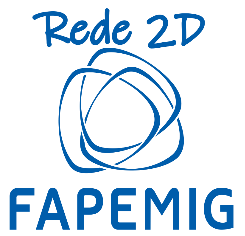Citation:
Leonel M. Meireles, Eliel G. S. Neto, Gustavo A. Ferrari, Paulo A. A. Neves, Andreij C. Gadelha, Ive Silvestre, Takashi Taniguchi, Kenji Watanabe, Helio Chacham, Bernardo R. A. Neves, Leonardo C. Campos, and Rodrigo G. Lacerda. 2020. “
Graphene Electromechanical Water Sensor: The Wetristor.” Advanced Electronic Materials, 6, 2, Pp. 1901167.
Abstract:
Abstract A water-induced electromechanical response in suspended graphene atop a microfluidic channel is reported. The graphene membrane resistivity rapidly decreases to ≈25% upon water injection into the channel, defining a sensitive “channel wetting” device—a wetristor. The physical mechanism of the wetristor operation is investigated using two graphene membrane geometries, either uncovered or covered by an inert and rigid lid (hexagonal boron nitride multilayer or poly(methyl methacrylate) film). The wetristor effect, namely the water-induced resistivity collapse, occurs in uncovered devices only. Atomic force microscopy and Raman spectroscopy indicate substantial morphology changes of graphene membranes in such devices, while covered membranes suffer no changes, upon channel water filling. The results suggest an electromechanical nature for the wetristor effect, where the resistivity reduction is caused by unwrinkling of the graphene membrane through channel filling, with an eventual direct doping caused by water being of much smaller magnitude, if any. The wetristor device should find useful sensing applications in general micro- and nanofluidics.